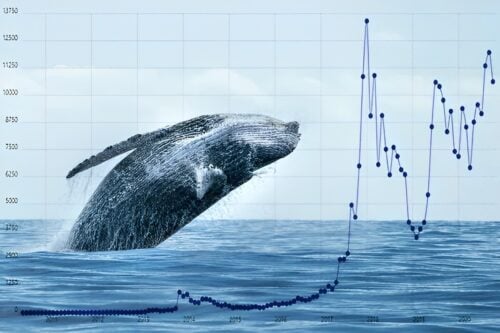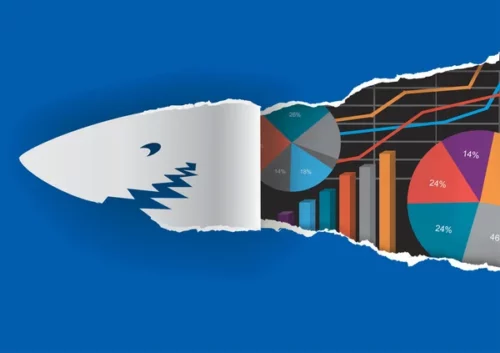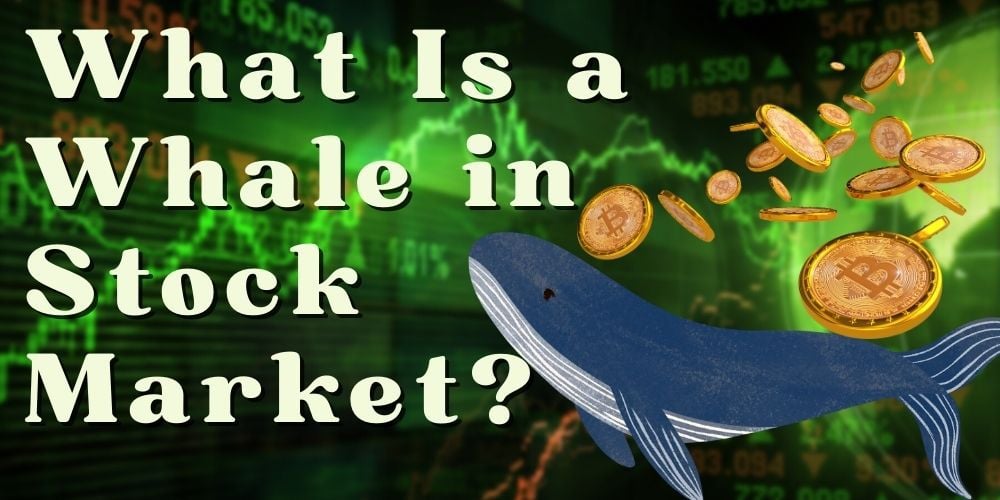If you have come across the term “Whale” while researching trading strategies and are confused by what it means, we don’t blame you. Financial forums often use such industry-specific terms. We explain the term and its importance below.
What Is a Whale in Stock Market?
The term “whales” is used for investors who hold large portfolios.
They have the ability to influence price trends in financial markets through the sheer size of their holdings.
The terms “smart money” and “big players” are also used interchangeably.
Examples of whales might include:
- Institutional investors
- Mutual funds
- Endowments
- Pension funds
- Insurance firms
- Hedge funds
- Private equities
Some high-net-worth individuals whose holdings are several thousand times bigger than the average investor might also be called whales.
Warren Buffet is one such oft-cited example.

A few traders believe that whale watching (tracking the movements of such large players) can help them formulate an effective trading strategy.
They think that since such investors have the tools and expertise for better analysis, their decisions might be worth following.
In recent years, easy access to information through message boards, financial news media, and other platforms has made this technique popular.
Social investing has also caught the fancy of the younger generation.
However, trading based purely on someone else’s investment decisions could be fraught with risk.
After all, their hard-earned money is at stake, and no one else can be held responsible if a loss happens.
Folks would be well advised to exercise caution and do their research when scouting for investment opportunities.
Why Are Rich People Called Whales?
Acquatic-themed terms such as “whale”, “shark,” and “dolphin” in finance are thought to have come from the gambling industry.
Poker players often use these names for different types of bettors.
In their world, whales are big spenders who love to play high-stakes games even though they may not be very good at it.
You might have heard “high roller,” another term given to these people.
Casinos go out of their way to lure such clients and ensure their money comes to them instead of competition.
Sharks, on the other hand, are better players who prey on “whales” and “small fish” who lack the skills needed.
Lastly, “dolphins” is a term used to mean a smaller whale.
What Happens When They Buy a Stock?
Due to their size, the entry of whales typically causes a stock price to move up significantly.
Once it reaches a targeted value, they exit, causing a crash.
Let’s understand how this happens.
Firstly, a large trader would buy up a majority of available positions and limit orders for a given share.

Others might notice the surge in volume, and start taking a similar position, thinking it could be a portent for some impending good news about the company.
Once a certain target price is reached, these big players exit their holdings (albeit slowly).
Again, other investors are watching, and as the trend becomes stronger, they too may follow suit to avoid losses.
The stock will then move back to its inherently acceptable level.
In the process, the whale would have made a huge profit for themselves, but many others might lose money.
Can They Pump Stocks?
Legally, most stock exchanges and regulatory bodies prohibit market manipulators from carrying out such actions as pumping stocks.
First, let’s explain what this means.
Large players have several strategies at their disposal to profit from their size.
Pumping a stock through a buy wall or blocking with a sell wall are two techniques that they use.
The first involves placing a huge buy order at a price significantly above the market.
This drives up prices from other traders, and once it reaches the right point, the whale will dispose of their holdings.
A sell wall is the opposite – creating a big sell order at a lower-than-market price.
The stock starts moving in that direction, and large investors profit from buying it relatively cheaply.
Both strategies are inherently destructive for other traders and are prohibited by regulatory authorities.
But whales might be able to use some tricks to get away with them.
For example, they often work through several small accounts.
This disperses their wealth, and when they enter, it seemingly appears as though several regular traders are driving up volumes.
When exiting, the profits are again divided into each of the trading accounts, making it seem like a legitimate market action.
It can be quite difficult to figure out that the entire trading plan was carried out by a single entity.
What Are Sharks on the Stock Market?
Sharks are also large players in the financial world, like whales.
However, their investment strategy is usually restricted to price movements in shorter periods.
As the term suggests, these are successful traders who “eat” smaller fish.
They create false breakouts, price swings, and traps that bait other traders into entering positions.
After this is achieved, they exit, causing such retail investors to lose money.

The key difference between them and whales is the length of time each one holds positions.
The latter are more interested in long-term action or at least price movements that are much larger.
Sharks are also known to be more destructive – their wealth-creation tactics often hurt other traders.
Whales, on the other hand, surface relatively rarely, make huge investments, and then hold them for long periods before exiting positions.
What Is a Whale in Crypto?
Crypto whales are similar to their counterparts in equity markets.
They hold large amounts of cryptocurrency and can influence the price of coins held by them.
There is no clear definition of how much wealth is needed to be crowned a cryptocurrency whale.
Most crypto players, however, agree that having lots of circulating coins is usually a good definition.
Apart from influencing prices, such whales can also impact volatility in currencies.
Cryptocurrencies are less regulated than normal stock markets.
Hence whales and sharks can cause much more havoc while trading here than in securities.
This is part of the reason behind the extremely high volatility of these coins.
Larger and more stable cryptos, such as Bitcoin and Ethereum, are difficult to manipulate.
But smaller ones are often at the mercy of such big players.
Micheal Saylor and Brian Armstrong are generally acknowledged to be crypto whales.
Final Thoughts
It is important to understand who or what whales and sharks are and how they can move financial markets for their own profit.
Whether it is equities, commodities, forex, or the cryptocurrency markets, these players exist everywhere.
In recent years, replicating their moves has become fashionable due to the proliferation of social investing and the easy availability of market analysis.
As a small trader, however, following their strategies can sometimes leave you drowning in the deep end of the water (pun intended).
While it might be possible to understand their motives and profit from it, a lot of analysis and research is needed to get it right.
In most cases, predicting these movements is very hard because they are done secretively to avoid being caught by regulators.
Hence, until you are absolutely sure, whale watching is best left to nature lovers.


 Tags:
Tags:










